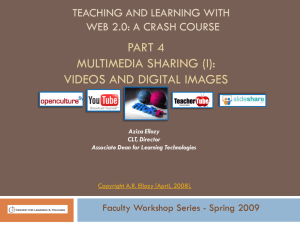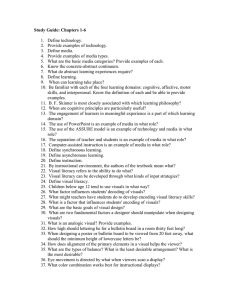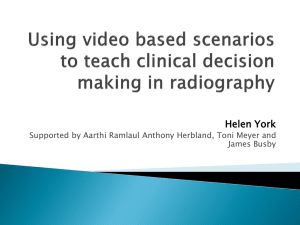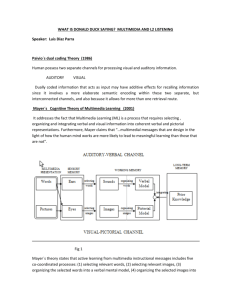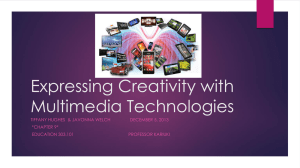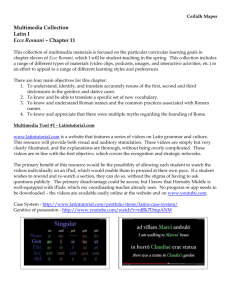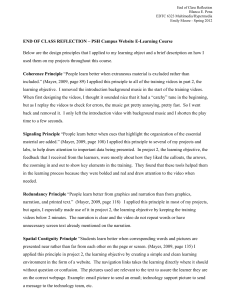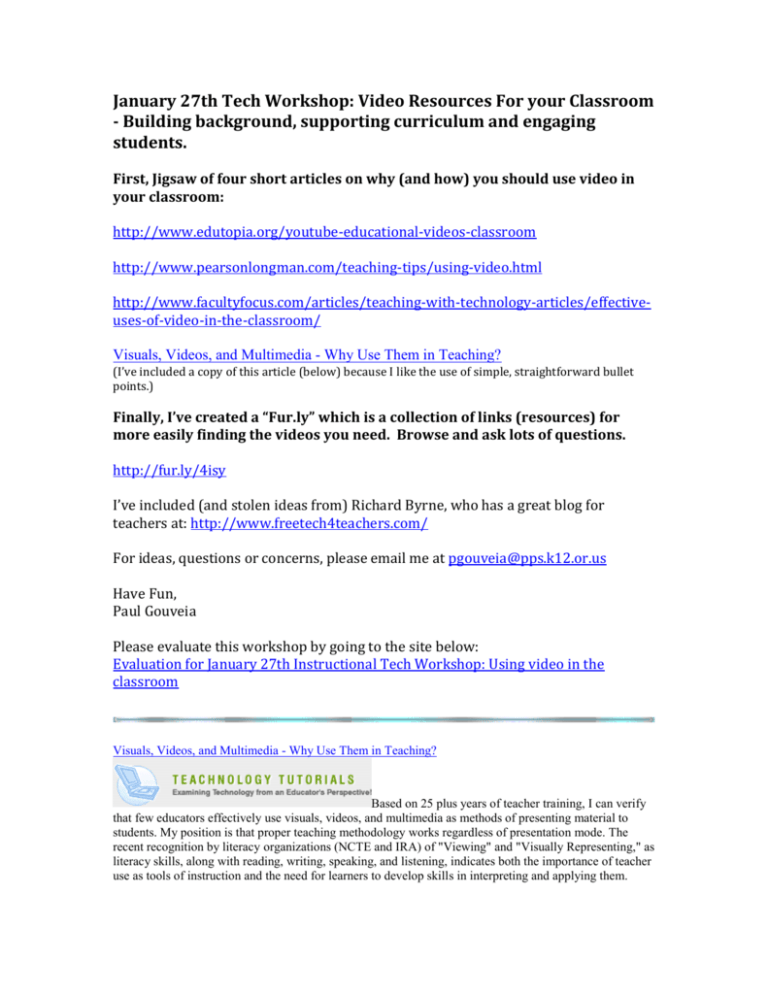
January 27th Tech Workshop: Video Resources For your Classroom
- Building background, supporting curriculum and engaging
students.
First, Jigsaw of four short articles on why (and how) you should use video in
your classroom:
http://www.edutopia.org/youtube-educational-videos-classroom
http://www.pearsonlongman.com/teaching-tips/using-video.html
http://www.facultyfocus.com/articles/teaching-with-technology-articles/effectiveuses-of-video-in-the-classroom/
Visuals, Videos, and Multimedia - Why Use Them in Teaching?
(I’ve included a copy of this article (below) because I like the use of simple, straightforward bullet
points.)
Finally, I’ve created a “Fur.ly” which is a collection of links (resources) for
more easily finding the videos you need. Browse and ask lots of questions.
http://fur.ly/4isy
I’ve included (and stolen ideas from) Richard Byrne, who has a great blog for
teachers at: http://www.freetech4teachers.com/
For ideas, questions or concerns, please email me at pgouveia@pps.k12.or.us
Have Fun,
Paul Gouveia
Please evaluate this workshop by going to the site below:
Evaluation for January 27th Instructional Tech Workshop: Using video in the
classroom
Visuals, Videos, and Multimedia - Why Use Them in Teaching?
Based on 25 plus years of teacher training, I can verify
that few educators effectively use visuals, videos, and multimedia as methods of presenting material to
students. My position is that proper teaching methodology works regardless of presentation mode. The
recent recognition by literacy organizations (NCTE and IRA) of "Viewing" and "Visually Representing," as
literacy skills, along with reading, writing, speaking, and listening, indicates both the importance of teacher
use as tools of instruction and the need for learners to develop skills in interpreting and applying them.
The following overheads have been presented to many teachers and teacher candidates to sensitize them to
the need for effective use of visual media. These serve as an overview of how visual media may be infused
into the teacher's curriculum. Most often teachers use these without knowing why or how to do so. This
brief tutorial provides a philosophy and structure for doing so.
Rationale and Philosophy
VIEWING AND VISUALLY REPRESENTING ARE RECOGNIZED AS LITERACY/LANGUAGE
ARTS SKILLS BY NCTE,IRA,ET AL
RECOGNIZE THAT STUDENTS LIVE IN A VISUAL/ MULTIMEDIA WORLD
PROVIDE MULTISENSORY APPROACH
INCREASE STUDENT ATTENTION
PLACE CONTENT IN DRAMATIC, MORE PERSONALIZED CONTEXT
EFFICIENT WAY TO PRESENT MATERIAL
ALLOW POOR READER TO PARTICIPATE
PERMIT STUDENTS TO SEE WHOLE PICTURE
DRAMATICALLY INCREASE LEARNING/RETENTION OF MATERIAL
HOW SHOULD WE USE IN TEACHING?
AS PLANNED ACTIVITIES IN WRITTEN CURRICULUM SEQUENCE
AS TOOLS TO FACILITATE LEARNING
AS CO-SOURCES OF CURRICULUM CONTENT/SKILLS WITH TEXTBOOKS (NOT LESS
IMPORTANT "ADD-ON")
VISUALS, VIDEOS, AND MULTIMEDIA MUST BE SYSTEMATICALLY AND SEAMLESSLY
INTEGRATED INTO ALL CURRICULUM AREAS
GENERALLY INEFFECTIVE PRACTICE FOR VIDEOS-TAKING NOTES WHILE
VIEWING(STUDENTS MISS WHAT IS BEING PRESENTED,WHILE THEY ARE NOTE-TAKING)
GENERALLY EFFECTIVE PRACTICE-PRETEACHING(FOCUSING ATTENTION ON CRITICAL
INFORMATION) AND FOLLOW-UP/ACCOUNTABILITY ACTIVITIES
STUDENTS MUST BE ACCOUNTABLE FOR CONTENT, AS THEY ARE WITH TEXTBOOK AND
TEACHER NOTES
WE HAVE A PROFESSIONAL RESPONSIBILITY TO TEACH OUR CURRICULUM IN THE
OPTIMAL WAY AVAILABLE-THIS INCLUDES SYSTEMATIC INTEGRATION OF VISUALS,
VIDEOS, AND MULTIMEDIA INTO OUR CLASSROOMS.
About the Author:
Professor Jim Nichols
Chairman, Nyack College Dept of Ed
Nyack, NY 10960
Email: nicholsj@nyack.edu
©2010 Professor Jim Nichols, All rights reserved.

